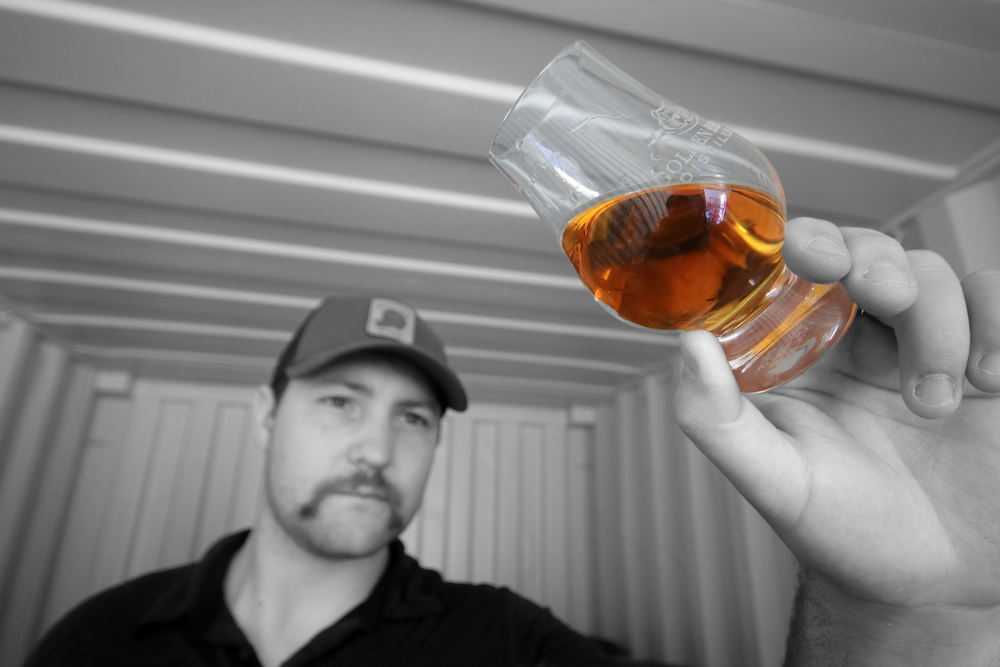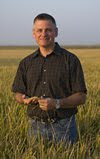Rice Spirits Soar
By Jim Morris
Too much of anything is bad, but too much good whiskey is barely enough.”
– Mark Twain –
While the biggest culinary claim to fame for California rice is as the foundation of virtually every sushi roll in America, there’s an almost never-ending list of additional uses, including a primary ingredient in several types of alcohol.
Premium California rice is not only a staple in sake and beer, it’s also essential for Golden Beaver Distillery in Chico, a new and fast-ascending entry in the growing fine craft spirits industry.

It seems fitting that a set of circumstances that would make a Hollywood filmmaker blush led to Kris Koenig’s foray into rice spirits. This Emmy award-winning filmmaker had to extend his business trip to Scotland following a volcanic eruption in Iceland. His extended stay afforded him quality time with a renowned whiskey expert. Two master courses later and the seeds were planted for Koenig’s new endeavor.
Just like the beverages he and sons Nils and Devin are lovingly creating; patience and perseverance are keys to making distilled spirits.
“Learning to distill at this level is like drinking out of a fire hose,” Koenig said. “It’s hugely complex. The process of coming up with the mash recipe; that was a three-year process. That ultimately resulted in the current recipe that we’re using. The flavor profile of that recipe has been good enough to get us awards right out of the chute – within one year of our opening, so we think we nailed it.”

Calrose rice is the central ingredient for the Golden Beaver product line, which differentiates them from many competitors.
“What we foresee is a rice whiskey boom,” Koenig said. “We’re creating a new class that is somewhat in between traditional brown spirits and white spirits. Our Beaver Likker Moonshine has a nice fresh taste like vodka, but has also the complexity of a brown spirit in a white spirit.”
Critics agree, as Beaver Likker just took home a platinum award from the Ascot Awards from the American Spirits Council of Tasters.
Koenig said there’s a noticeable difference between moonshine from corn and rice, the later having especially strong appeal to younger consumers.
“A corn-based moonshine will have heavy corn-forward flavors,” he remarked. “Using the rice malt and Calrose rice, we get nice floral notes with a sweeter profile. There isn’t actually sugar there, but it’s what your brain thinks. That profile is a little lighter to drink. People are going lighter. They’re trying to get into a lighter, healthier profile. We’re also gluten free. It’s a softer flavor than alcohol made with corn.”

Golden Beaver also has other handcrafted spirits, including bourbon and rye whiskey, which are also generating a lot of interest. Sporting labels that highlight the amazing environment found in the Sacramento Valley, their whiskey took home two bronze medals at the prestigious San Francisco World Spirits Competition this spring.
For those who want to learn more about these handcrafter spirits, a trip to the distillery in Chico is highly-recommended. There, you can learn from highly-trained experts. As a bonus, Golden Beaver hopes to offer a craft cocktail bar in the near future, as well as ready to drink canned beverages.
It also seems fitting that a business with a major focus on California rice, the environmental crop, would have an important environmental cause of its own – which leads to why they went with the Golden Beaver name.
This marvelous creature was hunted to near extinction during the Gold Rush, and there’s now an effort to build up the population. A portion of the company proceeds is sent to an effort to save this dwindling species.
“The Golden Beaver created the whole environment that you and I live in today,” Koenig said. “If it wasn’t for the golden beaver, we wouldn’t have the habitat that we have in the valley up here in the North State. We wouldn’t have the salmon runs, because those beaver ponds that were here for millennia, allowed for those salmon to rear like they’re supposed to, before they journey to the ocean and then come back and spawn in those ponds. The beavers made a huge impact on the salmon, local trout and steelhead.”
Koenig said these beavers were also critical in providing natural fire breaks, something that sounds tremendously appealing in a state beset with devastating wildfires in recent years.
Starting a new business during the pandemic has been a challenge to say the least, but Koenig is encouraged and driven to grow their quality and popularity.
“We continue to refine our recipe and it’s getting better,” he said. “That’s the whole goal.”
 Jim Morris is Communications Manager for the California Rice Commission. Jim has worked in communications for more than 20 years. When he’s not on the job, he enjoys his family, faith, football, outrageous monster stories and running marathons.
Jim Morris is Communications Manager for the California Rice Commission. Jim has worked in communications for more than 20 years. When he’s not on the job, he enjoys his family, faith, football, outrageous monster stories and running marathons.





